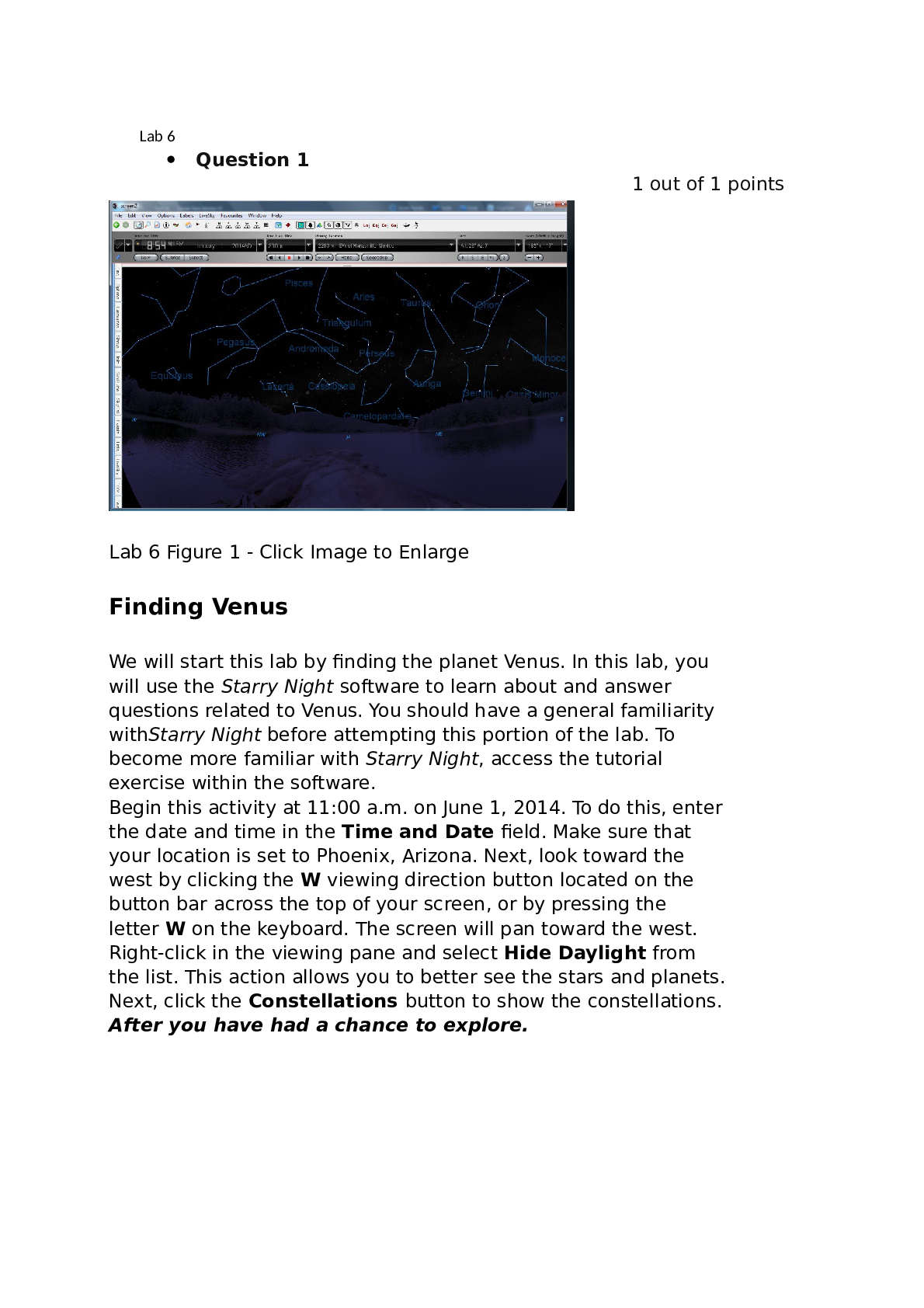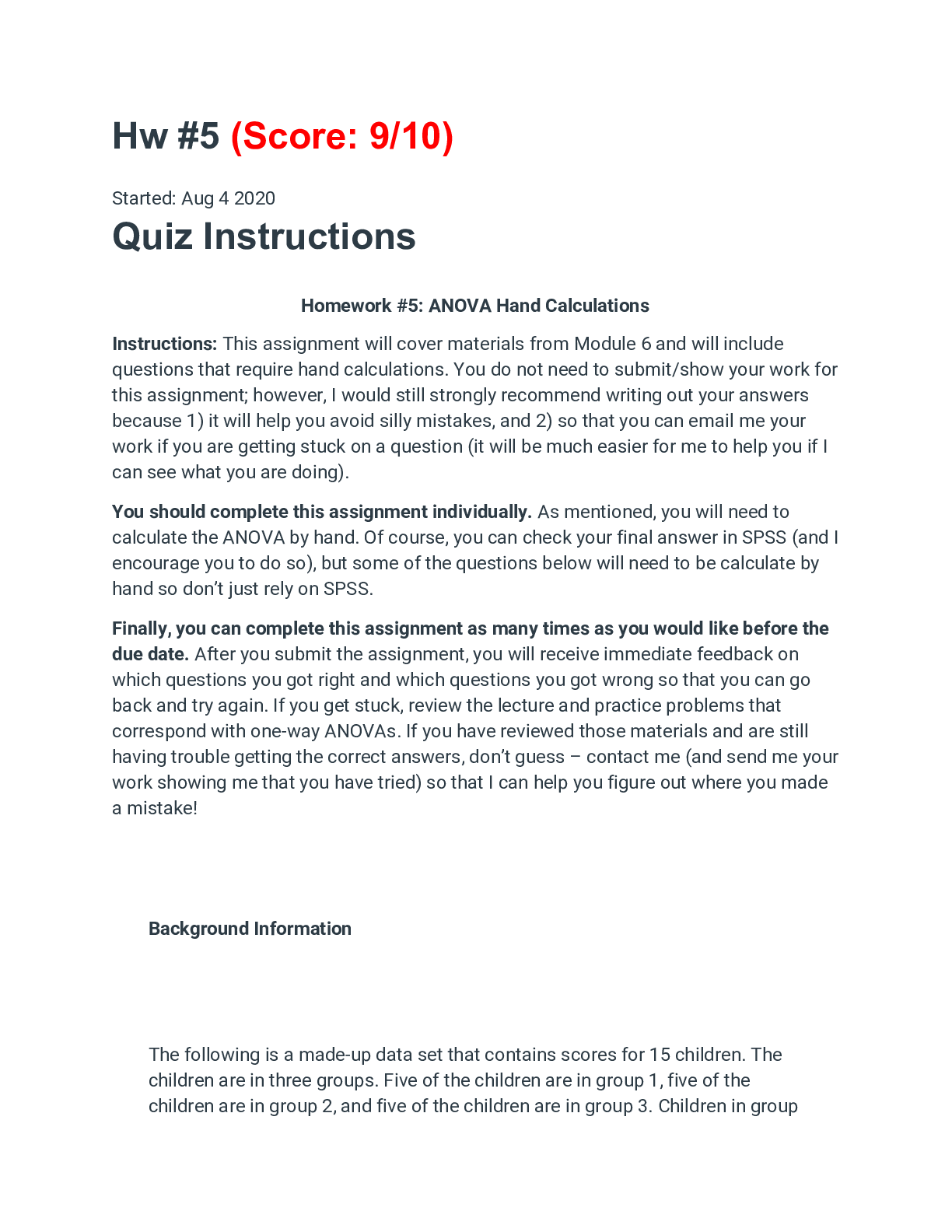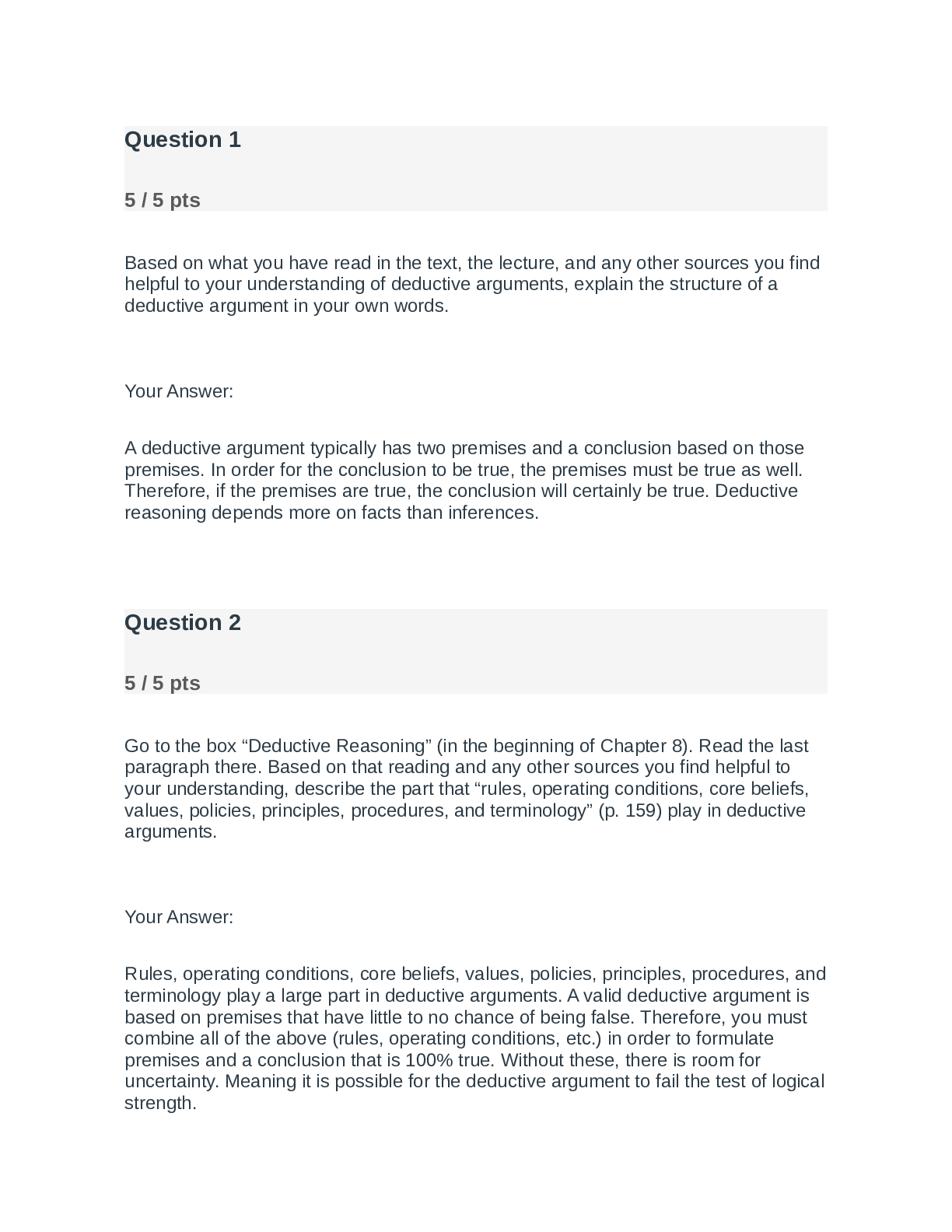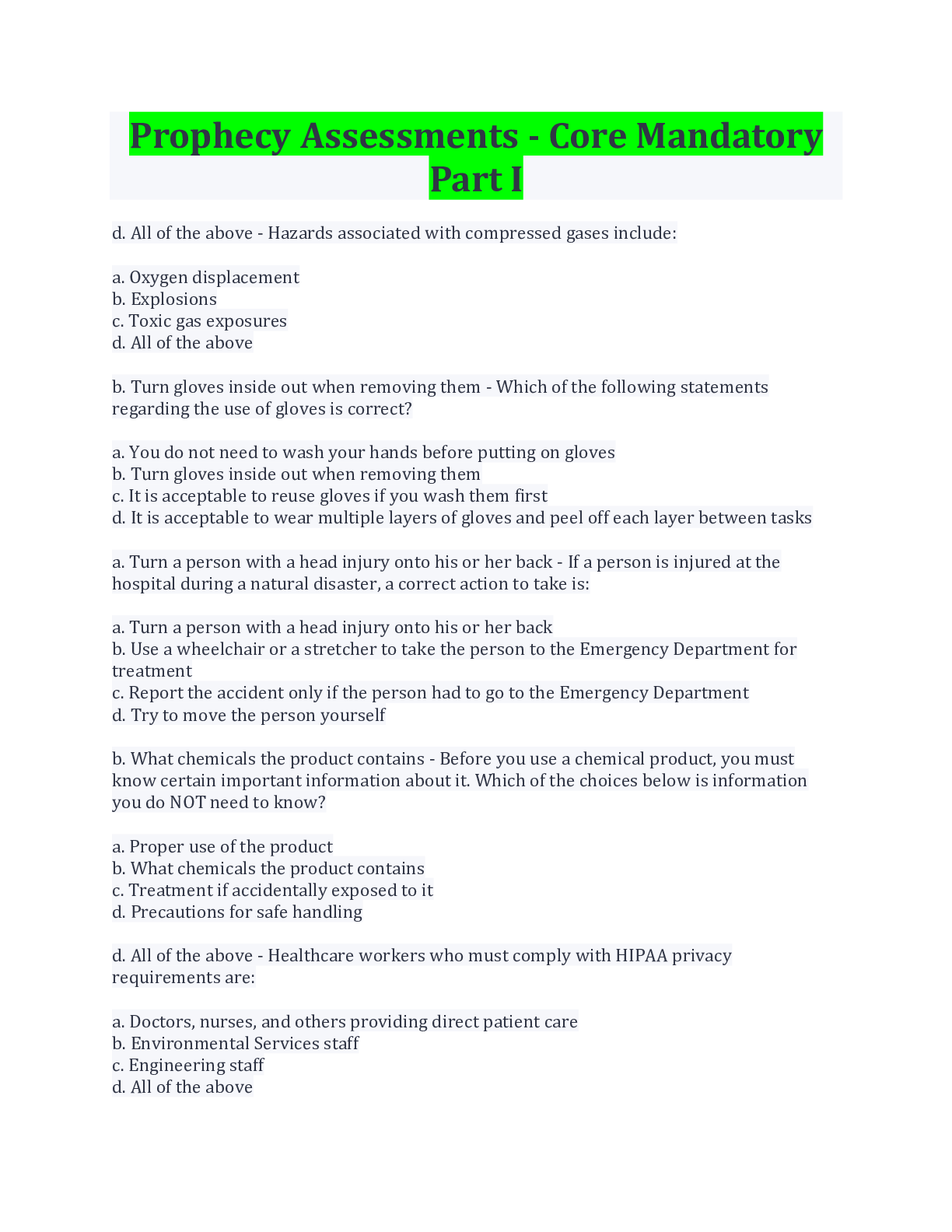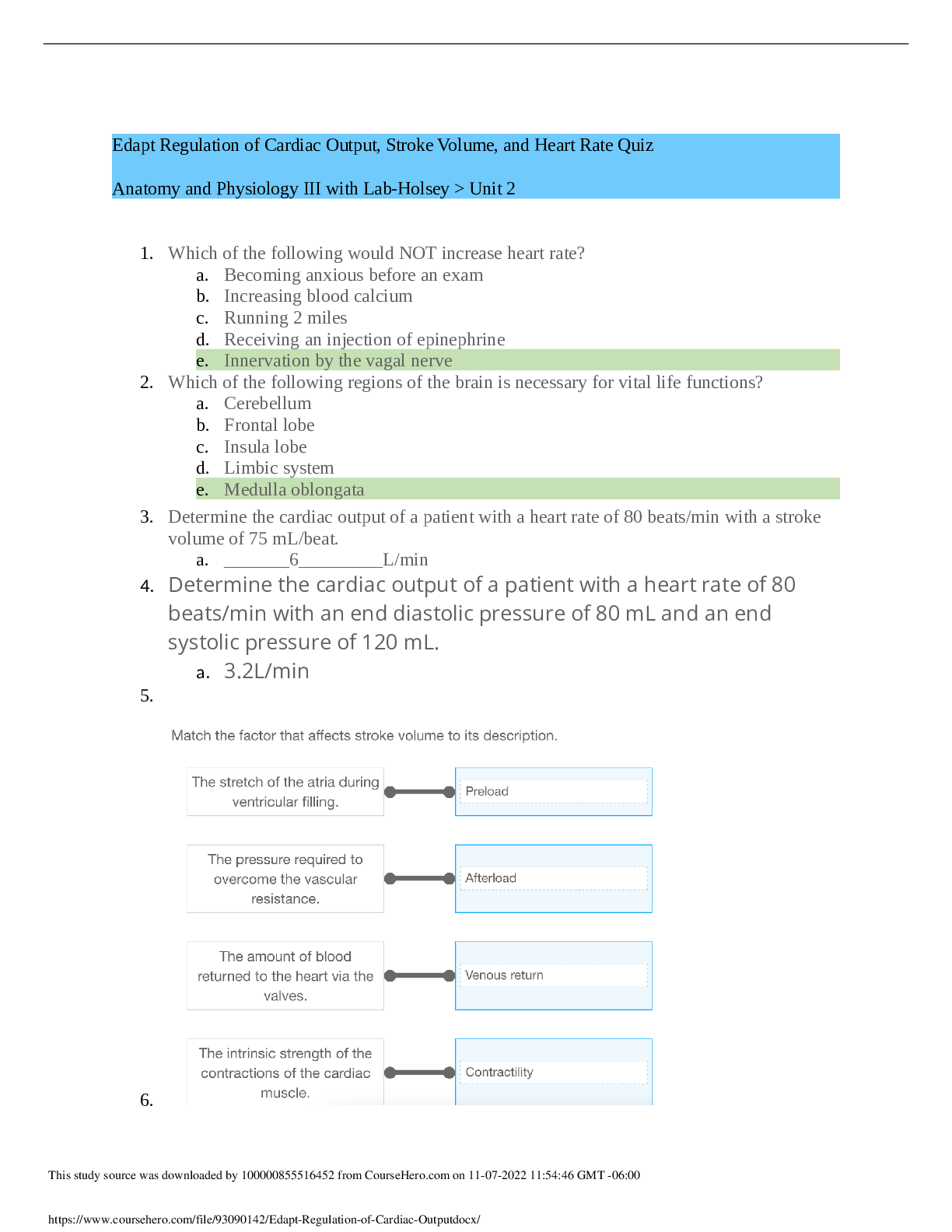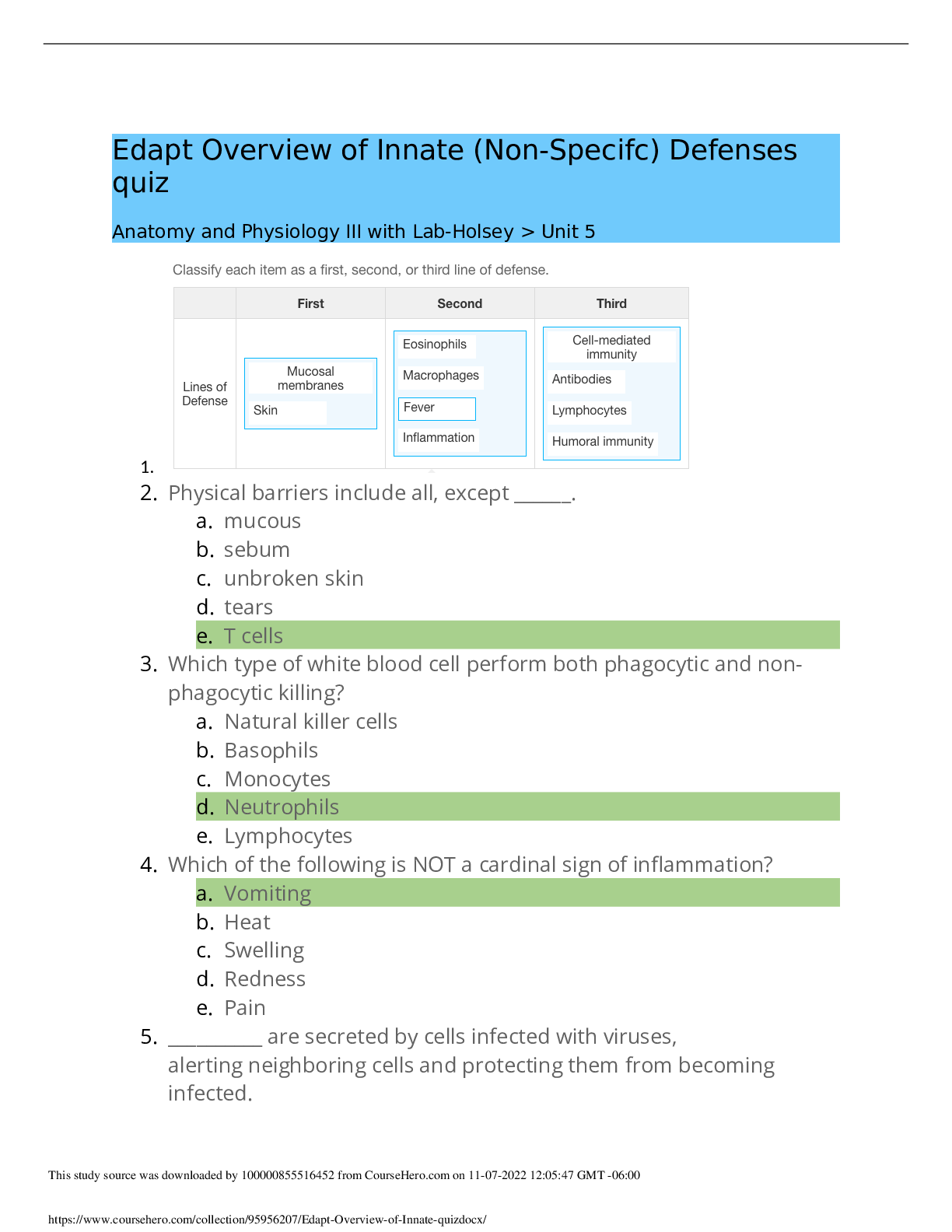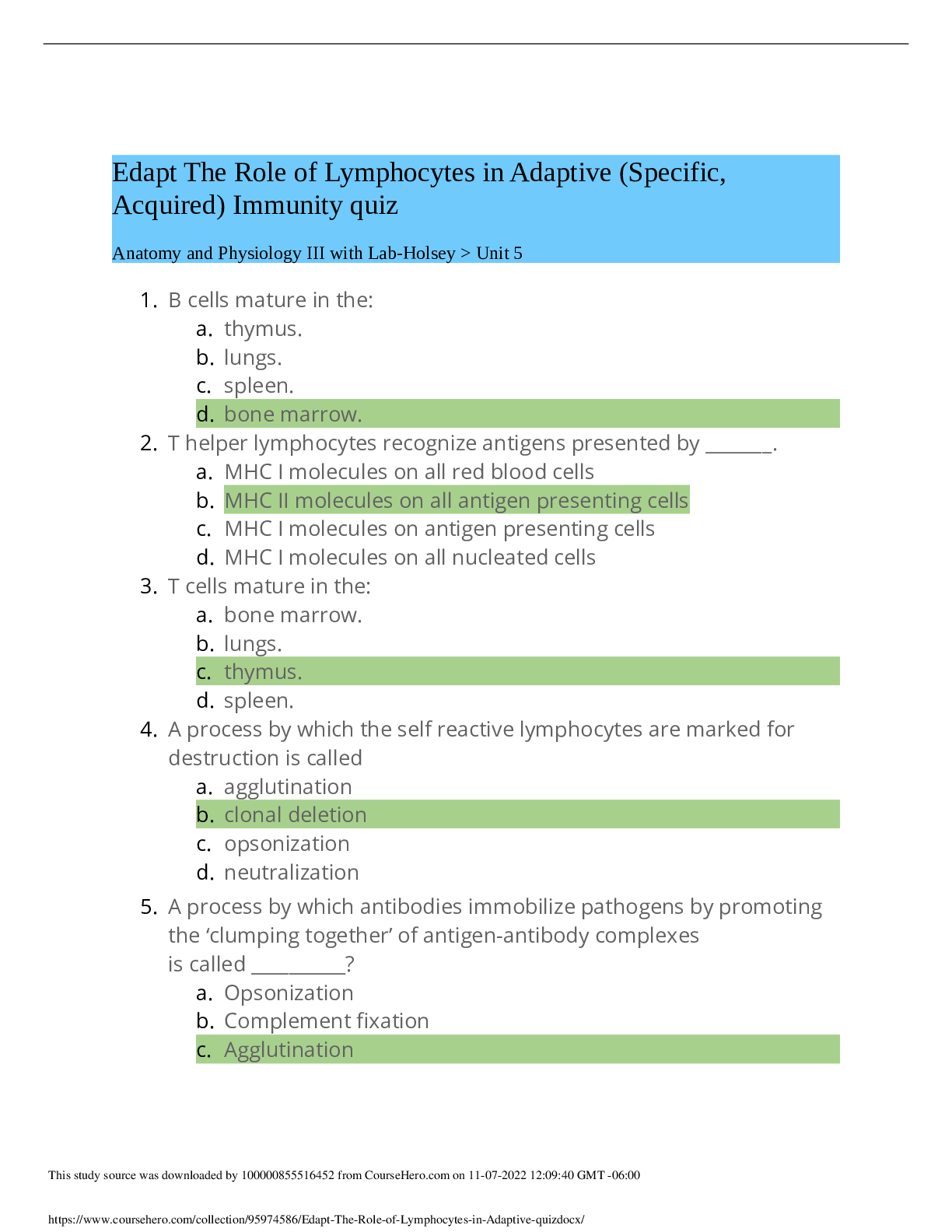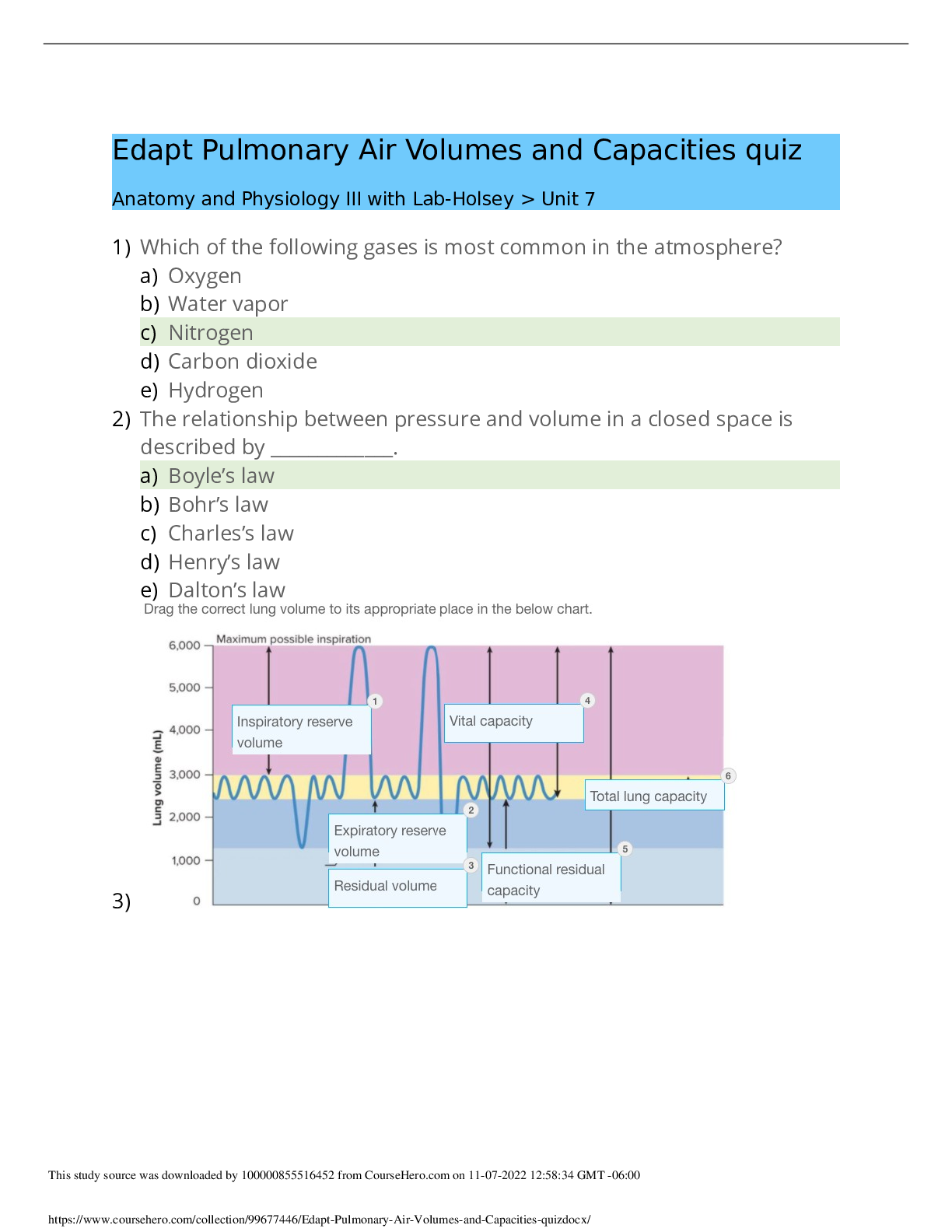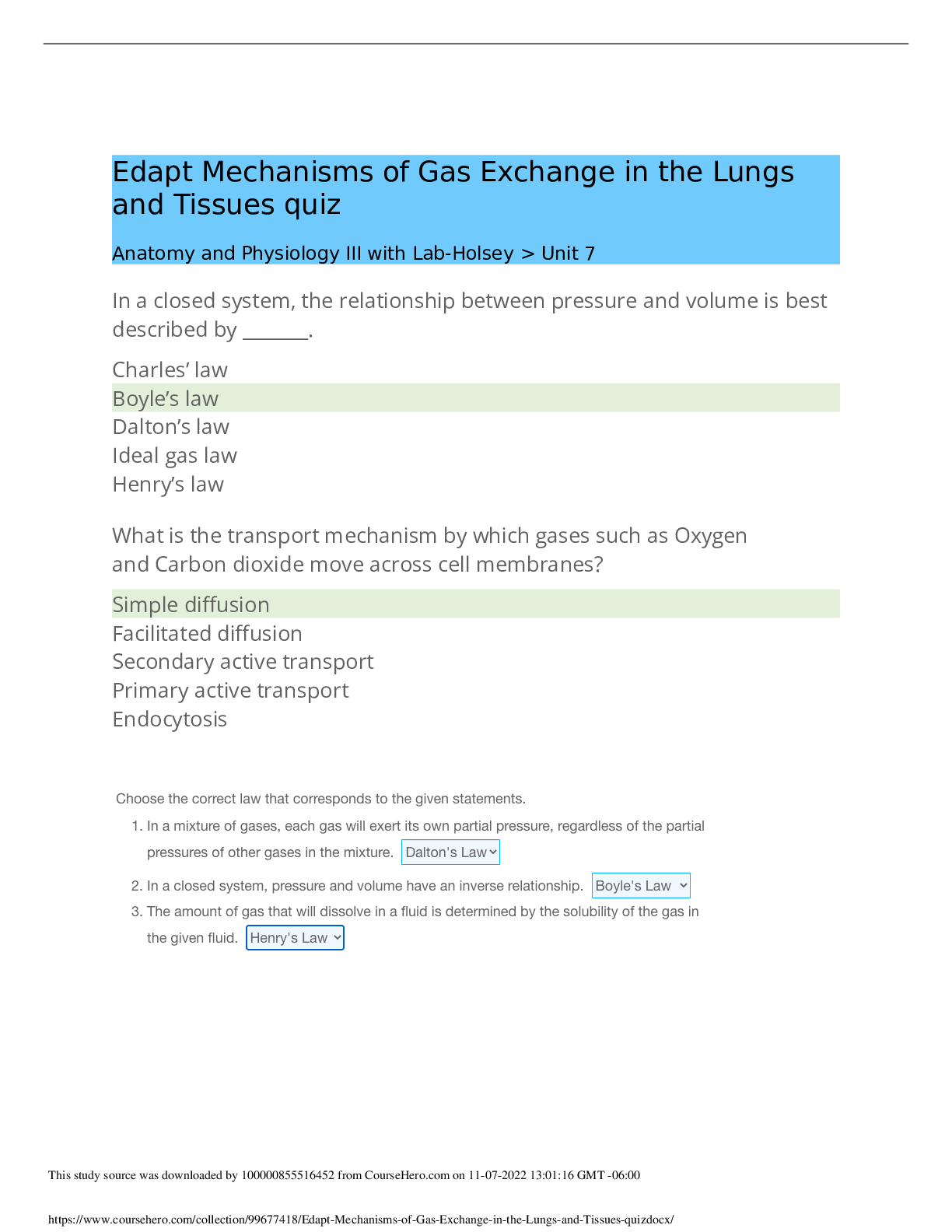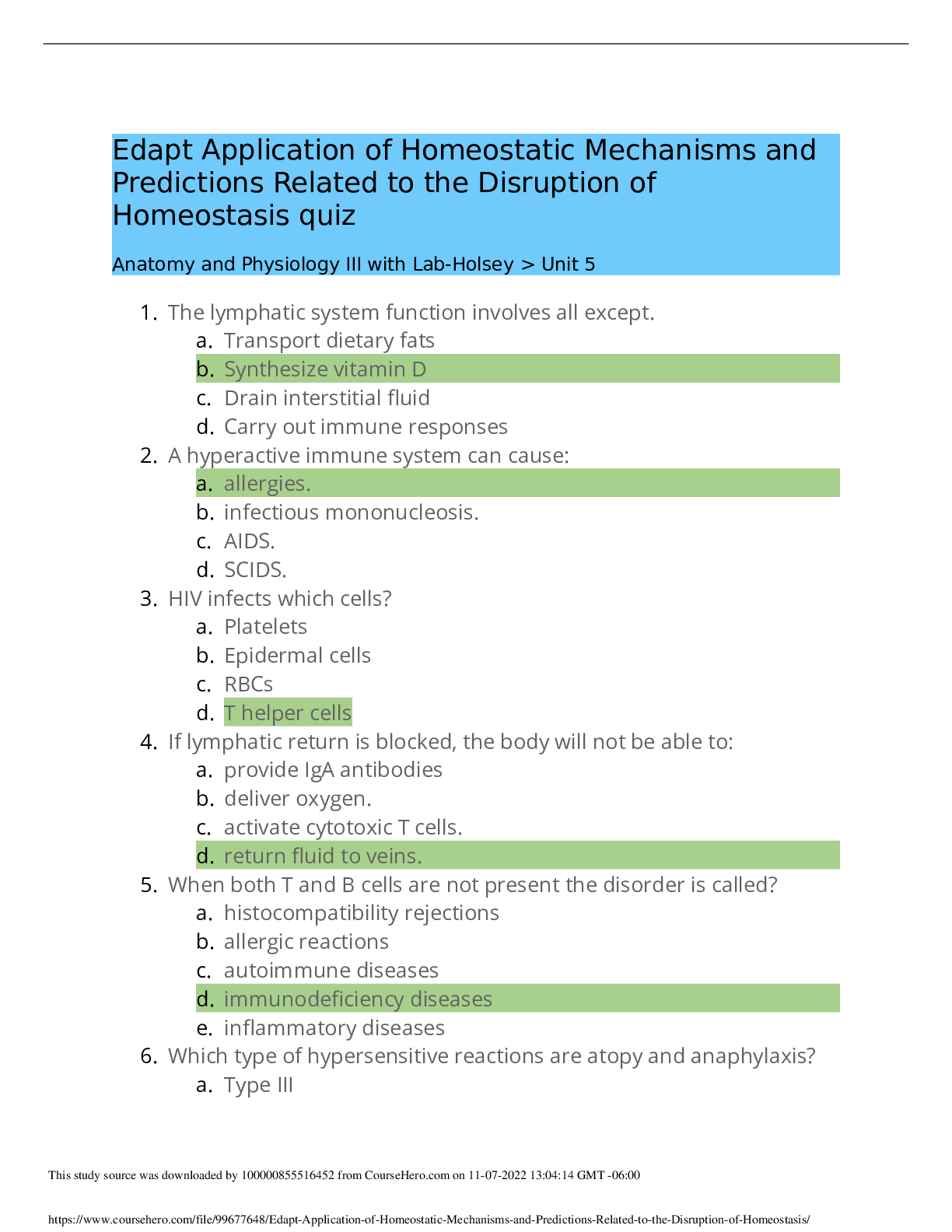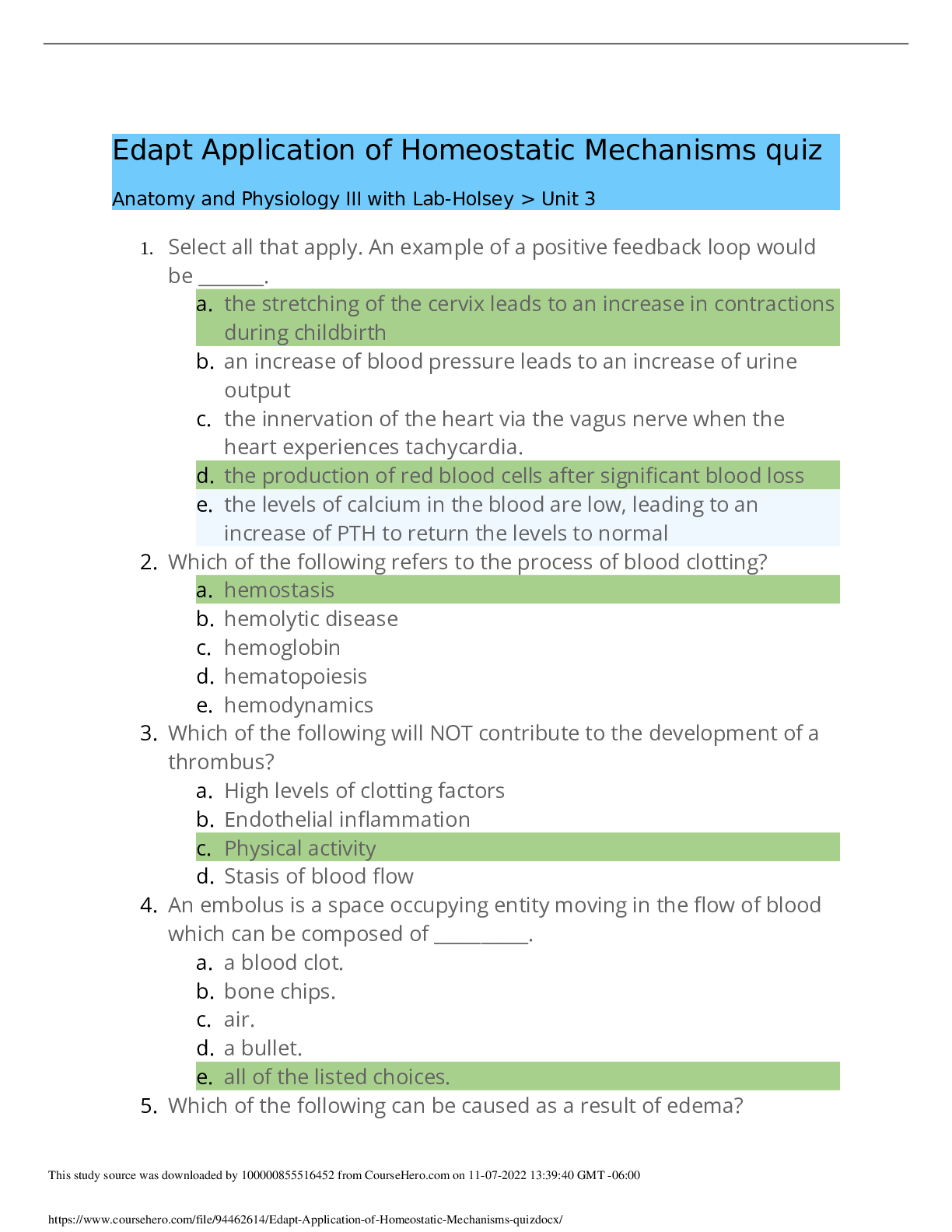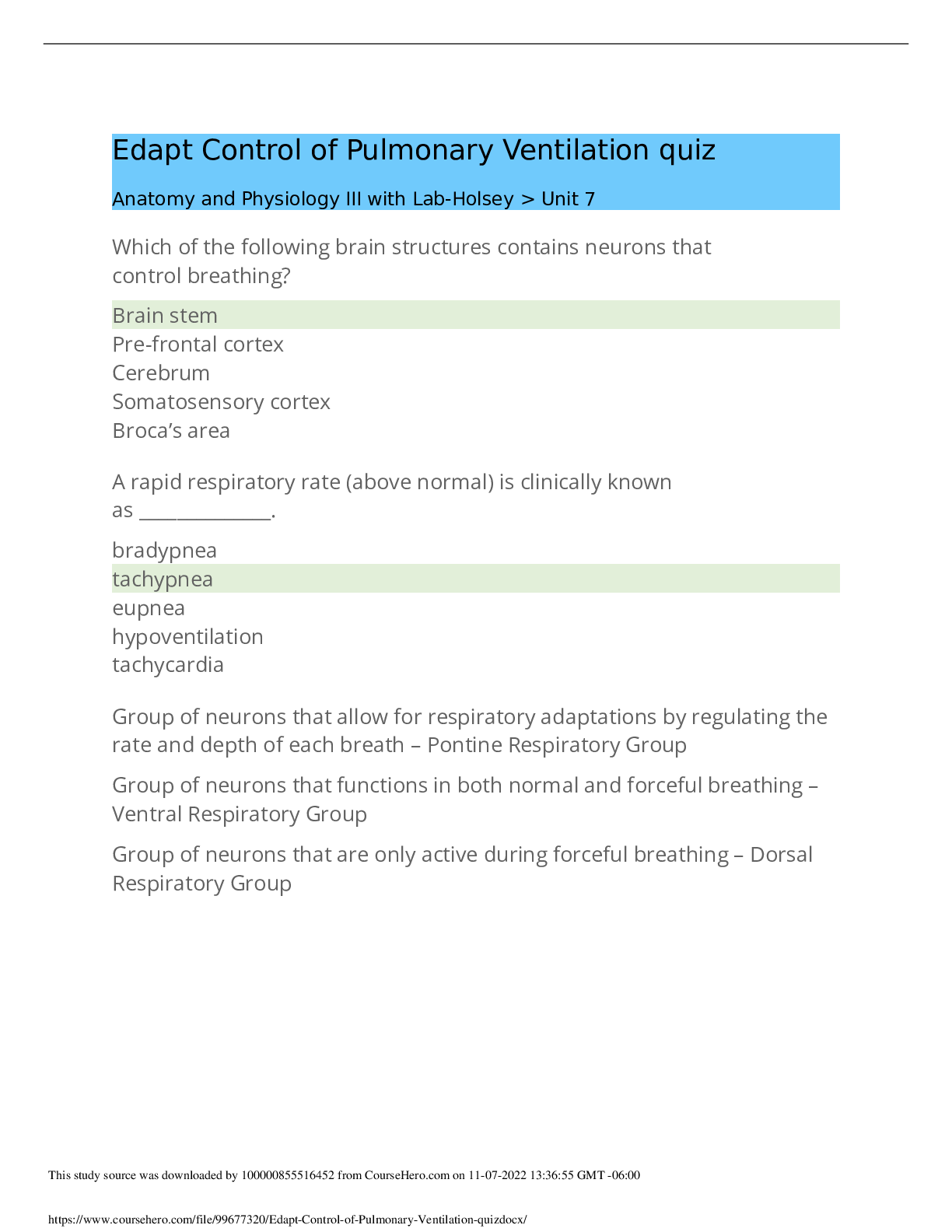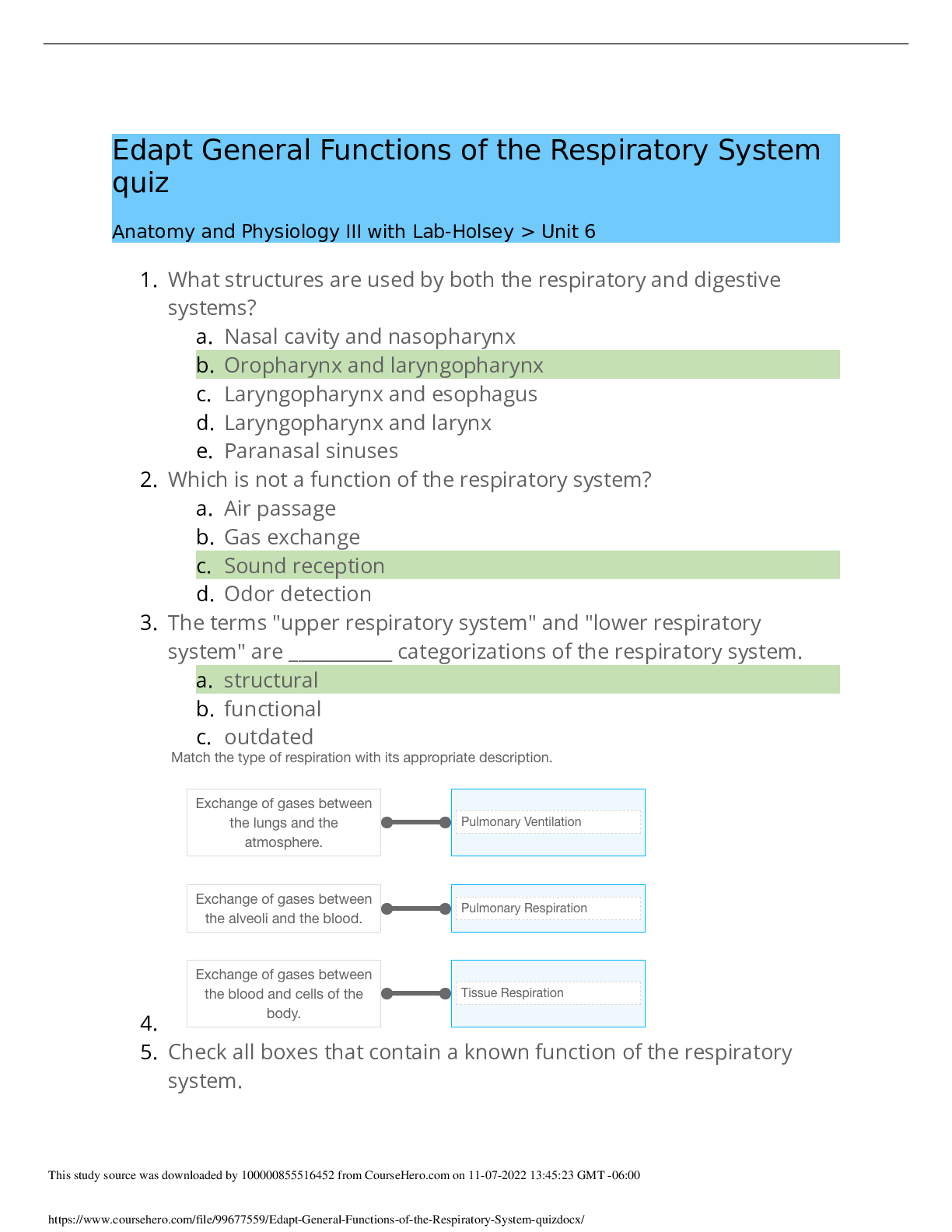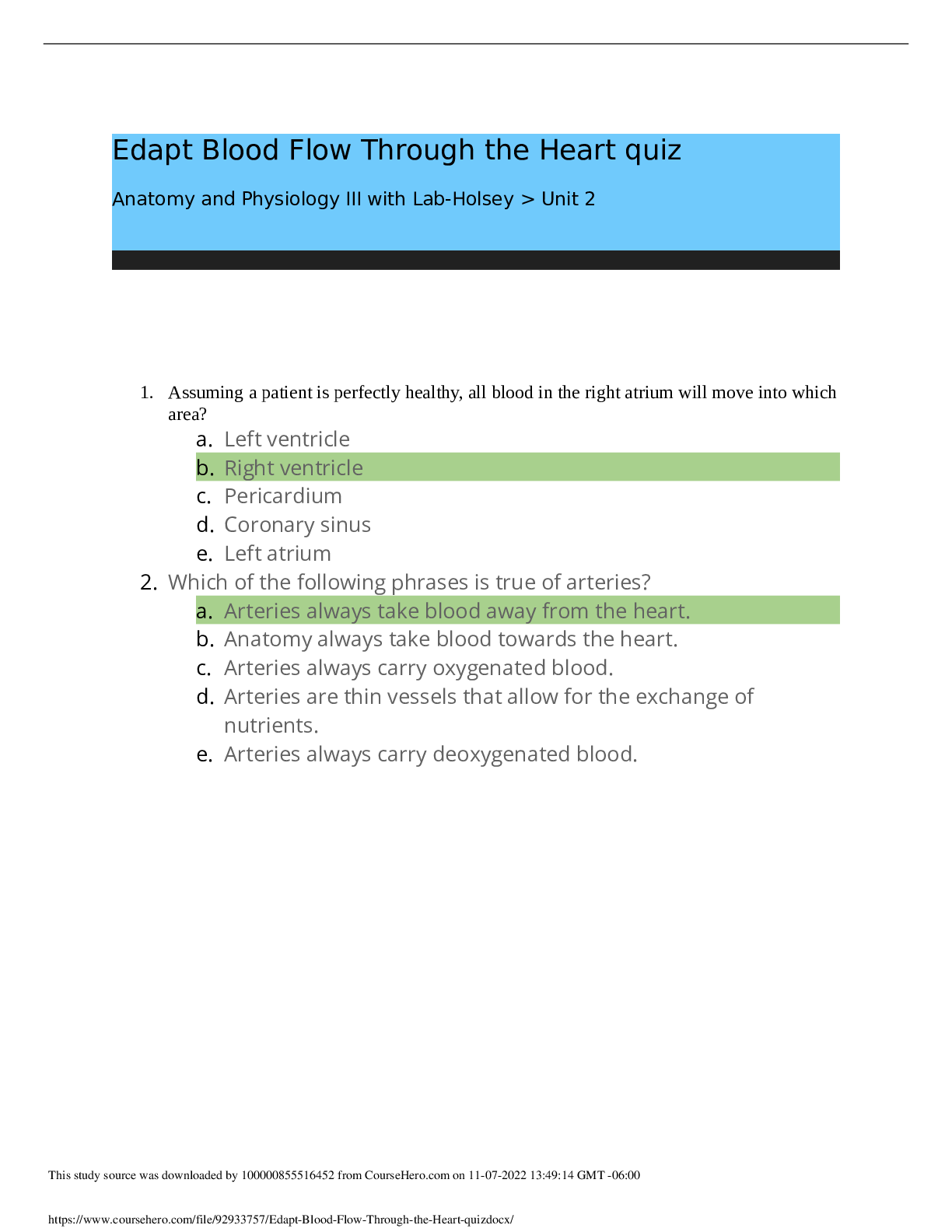Astronomy > QUESTIONS & ANSWERS > Questions and Answers > Arizona State University AST: 113 Astronomy . Lab 11Exam. 30 Q&A (All)
Questions and Answers > Arizona State University AST: 113 Astronomy . Lab 11Exam. 30 Q&A
Document Content and Description Below
Arizona State University AST: 113 Astronomy . Lab 11Exam AST 113 Exam. 30Q&A QUESTION 1 Identify the moon in Figure 1 below by clicking on the moon. Figure 1 is a close up image of Saturn's ri... ngs that was captured by the Cassini spacecraft. 208, -537 · Question 2 1 out of 1 points Based on the moon's location and size in Figure 1, what type of moon would this be? · Question 3 1 out of 1 points Referring to Figure 1 again, how does this moon clear the path along it's orbit in the rings? · Question 4 1 out of 1 points QUESTION: Based on the location and size of the moons shown in Figure 2, how would you classify these two moons? · Question 5 1 out of 1 points QUESTION: Using Kepler's 3rd law, what is the orbital distance (semi-major axis) of Amalthea from Jupiter? Hint: The quantityP2 / a3 is conserved, meaning that it is the same for both moons. P is the orbital period of a moon, and a is the semi-major axis distance between the moon and the planet. · Question 6 1 out of 1 points QUESTION: Based on these orbital parameters, how would you classify this moon? · Question 7 1 out of 1 points QUESTION: What geologic feature is shown crossing the image from lower left to upper right? · Question 8 1 out of 1 points How could the ridges in Figure 5 have split in two originally? · Question 9 1 out of 1 points What could explain the rising of the ridges in Figure 5 (select all that apply)? Warmer ice from below is racheted up through tidal stress fractures in the surface layer of brittle ice during each tidal interaction to form growing linear ice piles along the fractures. · Question 10 1 out of 1 points In Figure 5, approximately how wide is the fracture, given that the scale of the image is 14 by 17 kilometers (8.7 by 10.6 miles) across? Hint: You might want to use a ruler. · Question 11 0 out of 1 points Given that the ridge in Figure 5 has been rising at a rate of 3 cm/yr, how long have the two sheets been moving upward since the ridge began forming? Give your answer in years and round to the nearest whole number. · Question 12 1 out of 1 points How does the formation in Figure 5 provide evidence for a subsurface ocean on Europa (select all that apply)? Buoyancy of the surface ice atop liquid water or an ice layer below is an explanation for the feature. Liquid water or ductile ice being deposited from an unseen reservoir below the surface is an explanation for the feature. · Question 13 1 out of 1 points QUESTION: What geologic feature is shown in Figure 6? Hint: note that the interior of the feature is generally smooth and flat, with only minor cracks. · Question 14 1 out of 1 points Using the scale given in Figure 6 or recalling that the image shows a region that is 24 by 16 kilometers, how wide is the feature in the image? · Question 15 1 out of 1 points In Figure 6, what relative motion between the two ice sheets would explain the curved arcs seen inside the band? · Question 16 0 out of 1 points Assuming that the ice sheets have been slowly sliding apart from each other for 244,642 years, what is the average rate of separation of the two sheets? Give your answer in cm/yr and round to the nearest 0.1 (for example, if you calculate 1.64cm/yr, round to 1.6cm/yr.). · Question 17 1 out of 1 points Why are there successive layers of frozen ice in the middle of this band? · Question 18 1 out of 1 points In Figure 6, notice the straight crack running along the band? Did this crack form before or after the formation appeared? · Question 19 1 out of 1 points How could the bands on Europa, such as the one shown in Figure 6, give evidence for a sub-surface ocean? 1 out of 1 points QUESTION: The water vapor plumes shown in Figure 8 provide evidence for subsurface oceans on Enceladus. Which of the statements below ly states this interpretation of the plumes? · Question 21 1 out of 1 points Figure 9. QUESTION: Given that Enceladus has an average diameter of 504 km, using Figure 9, approximately how far do the plumes extend from the surface? Be sure to consider even the faintest parts of the plumes that reach about half way up the image. · Question 22 1 out of 1 points In physics, the escape velocity is the minimum speed needed for an object to "break free" from the gravitational attraction of a massive body. The escape velocity from earth is about 40,270 km/h (25,020 mph). For a massive celestial object (e.g., a star or planet), the escape velocity at a given distance is given by the formula: where is the escape velocity in meters per second, is the universal gravitational constant and is equal to 6.67x10-11 m3/kg/s2, is the mass of the object in kilograms, and is radius of the object in meters. QUESTION: Enceladus has a mass of 1.08x1020 kg and a radius of 2.521x105 meters. What is the minimum speed (in meters per second) that the plumes must travel to escape the gravity of Enceladus? Round to the nearest whole number. · Question 23 1 out of 1 points Ice particles in the plumes from Enceladus were found to be rich in sodium salt, implying that the water has been in contact with rock. Furthermore, scientists using Cassini’s Cosmic Dust Analyser, have discovered a population of tiny dust grains, just 2–8 nm in radius, in orbit around Saturn that are rich in silicon, indicating they formed in water-ice. In order for these plumes to reach their observed height and velocity above the surface, the icy plumes require high pressure and temperatures near 90º C below the surface. QUESTION: Given this information, which of the following options would be the most likely source of heat and pressure for the plumes? · Question 24 1 out of 1 points Recalling that Europa's surface is composed of water ice, what is the most reasonable explanation for how the moon maintains it's thin oxygen atmosphere considering its exposure to solar winds and radiation? · Question 25 1 out of 1 points Triton's surface is covered with mostly frozen nitrogen. A mostly water-ice lower crust lies beneath, with an icy mantle and a substantial core of rock and metal deeper down Recalling the constituents of the Triton's atmosphere, what is the most likely mechanism that maintains Tritons atmosphere? · Question 26 1 out of 1 points QUESTION: Given the constituents of Io's atmosphere and the other information provide above, what is the most likely mechanism that maintains them? [Show More]
Last updated: 1 year ago
Preview 1 out of 9 pages
Instant download
.png)
Instant download
Also available in bundle (2)

THIS BUNDLE CONTAINS: University of the Cumberlands EMISS ISOL532 Telecommunications and network security. CHAPTER 1-14 + LAB 1-LAB 12, + mID-Term AND Final Exam.
University of the Cumberlands EMISS ISOL532 Telecommunications and network security. Chapter 1 and 2 Exam. 30 Q&A University of the Cumberlands EMISS ISOL532 Telecommunications and network security...
By Kirsch 1 year ago
$69
23
.png)
Arizona State University AST 113 ASTRONOMY Lab 1- Lab 14 All Scenarios <Questions and Answers>
Questions and Answers > Arizona State University AST 113 Lab 1. All Scenarios Questions and Answers > Arizona State University AST 113 ASTRONOMY Lab 2 Questions and Answers > Arizona State Unive...
By Kirsch 1 year ago
$49
14
Reviews( 0 )
Document information
Connected school, study & course
About the document
Uploaded On
Aug 09, 2022
Number of pages
9
Written in
Additional information
This document has been written for:
Uploaded
Aug 09, 2022
Downloads
0
Views
85



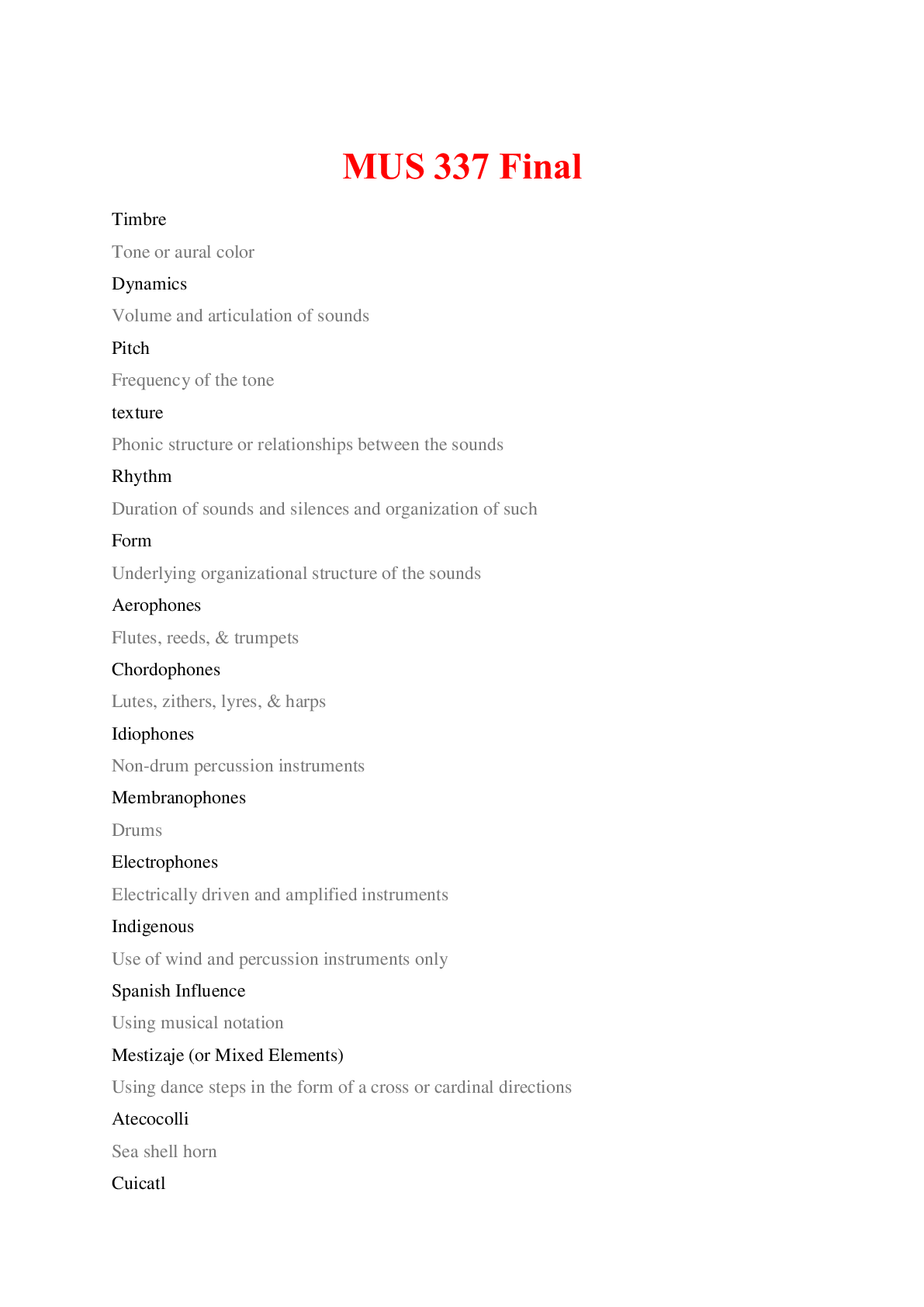







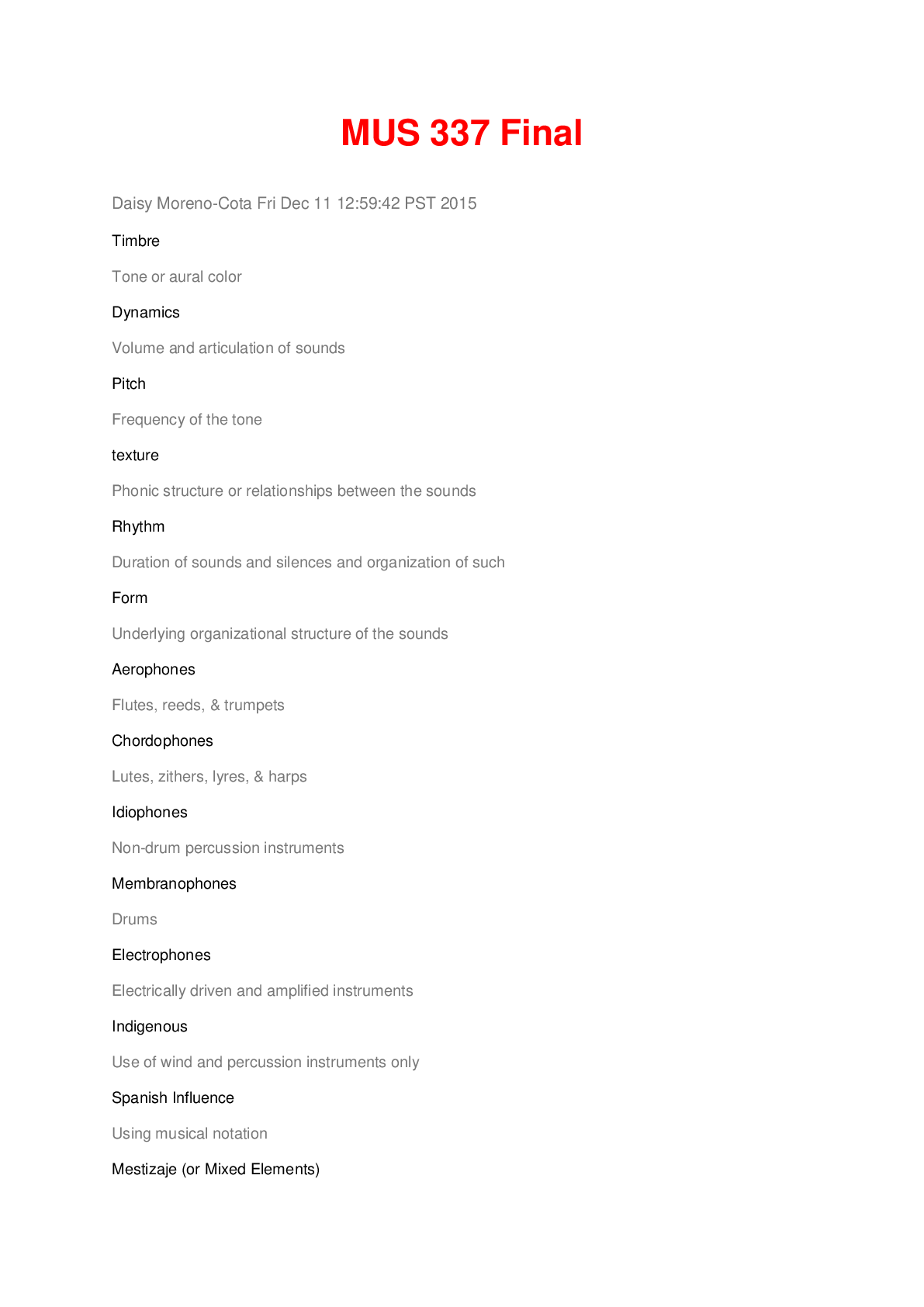




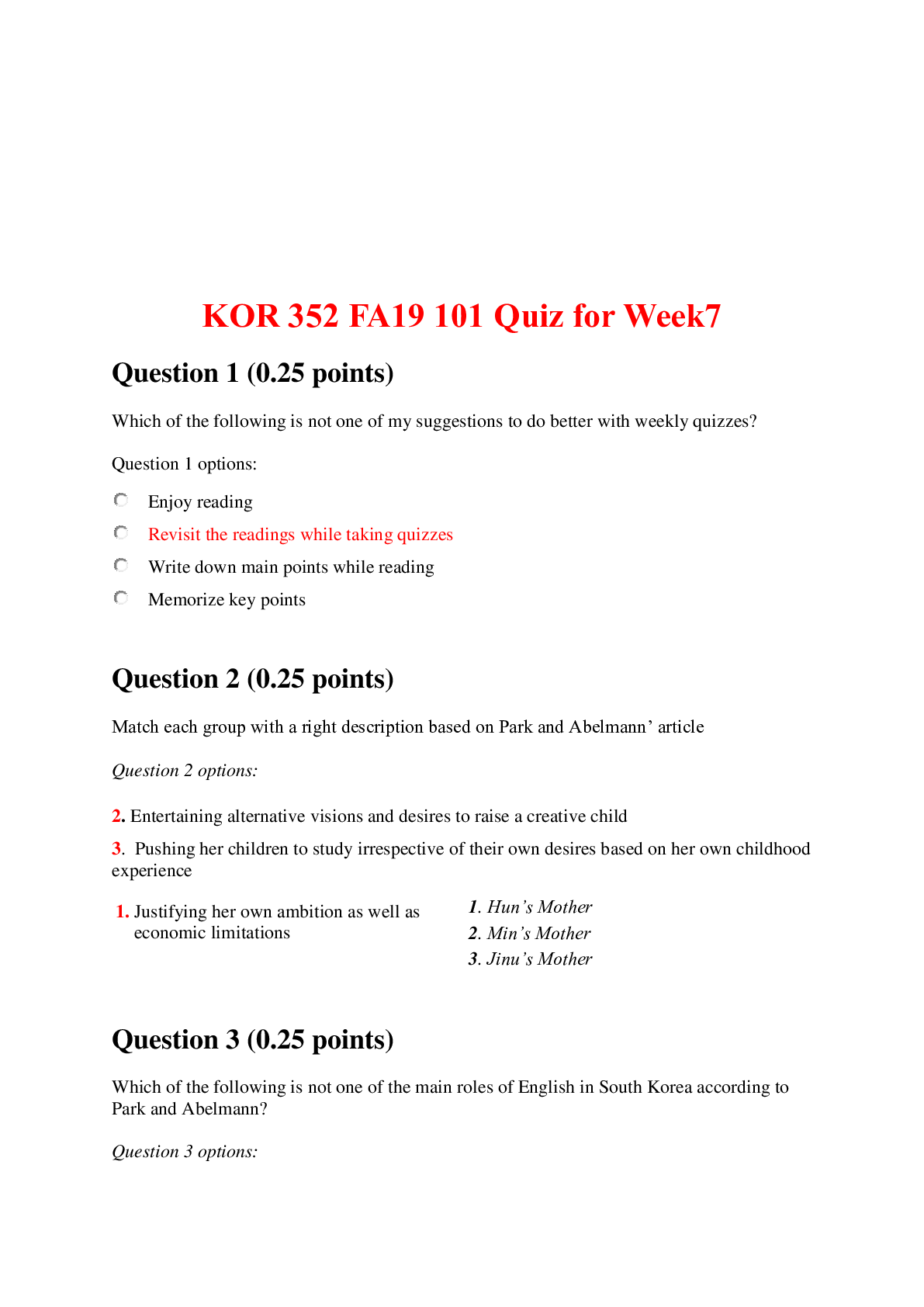
.png)
